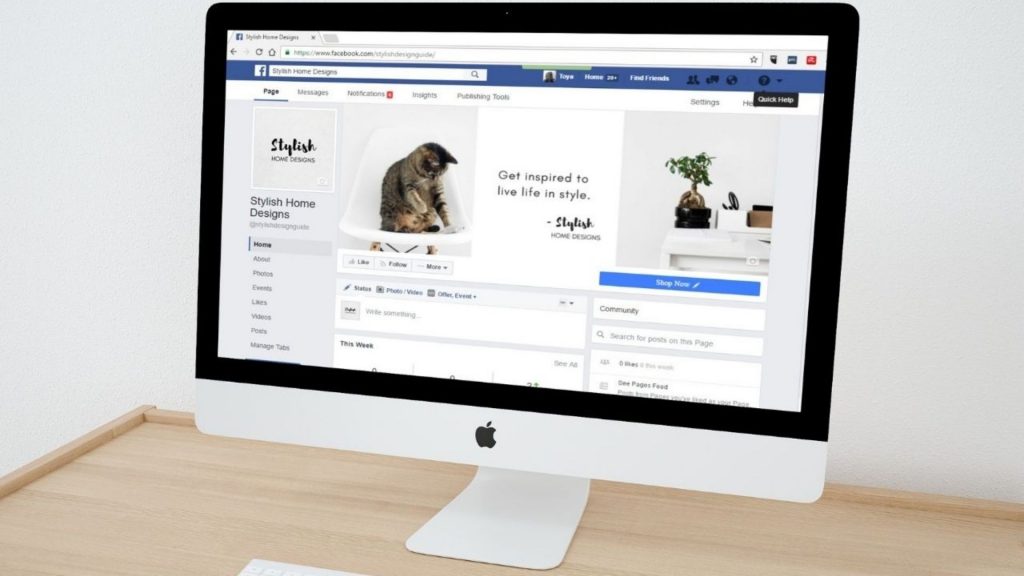Influencer marketing is one of the fastest-growing industries in the marketing world. Brands are increasingly leveraging the power of influencers to expand their reach, boost conversions, and increase brand awareness. According to a recent study, a whopping 93 percent of marketers are using influencer marketing to promote their brands. The tactic has proven to be very effective such that 68.9 percent of marketers plan to increase their influencer marketing budgets in future.
The rise of influencers has transformed our world, and we often see them on social media platforms and in the news. But influencer marketing is much older than people realize. Before the development of social media, people relied on TV, radio, and print ads for product recommendations. As more brands got into the market, buyers had more options to choose from, and this made the buyers’ journey more complex.
A greater stimulus was now needed to convince consumers to buy a product, and the earliest marketers figured that featuring influential people in ads could sway the buyer’s purchasing decisions.
In this blog post, we’ll take you through the history of influencer marketing to help you understand the role influencers play in marketing brands to the masses.
History Of The Word “Influencer” Itself
The term influencer has been used in the English language since the mid-1600s, though back then, it wasn’t a job title. Recently, the term has been used to refer to a career track that’s at the center of a growing but profitable industry.
To “influence” previously meant to affect a person or thing, or to extend one’s belief onto another person. But an even earlier definition of “influence” meant the radiation of a mystical fluid from the heavens that supposedly affected humans’ behavior, beliefs, and destinies. Positioning themselves as the sages of our time, most present-day influencers might approve of the early mystical connotations of influence, though a keen interest in terrestrial affairs isn’t a requirement for the job.
The meaning of the word “influencer” today refers to a person who has the power to influence a variety of people through various forms of media. They “radiate” their powers of influence through social and traditional media, and have the power of authenticity and loyalty.
Before 2016, we didn’t have a standard definition for the term influencer. Of course, the term existed, but before 2016, the influencer culture as we know it was only just emerging. Search trends for the term influencer on Google show that interest began towards the end of 2015, and since then, interest has been rising steadily throughout the years.
Figure 1: Search Trends Influencer. Source: Google Trends
Influencers who have devoted and engaged followers on their social media channels of choice are a great asset for brands who want to place their products before receptive audiences naturally and seamlessly than traditional advertising. This has led to the creation of a booming industry with analysts predicting that the influencer marketing industry could be worth up to $15 billion by 2022.
Different variations of the influencer theme have also emerged of late with terms such as nano-influencers and micro-influencers, and thought leaders now vying for our attention on social feeds. Brands use influencer marketing to make inroads with new prospects and customers. When they are on top of their game, influencers can greatly shorten the sales cycle, boost engagement, drive sales, and increase the basket size. Their trust and authenticity beat a clever sales pitch any day, and that is why influencer marketing is one of the fastest-growing marketing trends right now.
The influencer culture is inextricably tied to the rise of technology and consumerism. Influencers affect the buying habits of consumers by uploading original or sponsored content on social media platforms like Instagram, Snapchat, or YouTube. The value of the content, whether it’s moody photos, disappearing Stories, cheeky video reviews, or meandering blogs, is derived from the perceived authority and authenticity of the creator.
A beauty blogger tagging her “favorite” cosmetic brand on Instagram or a popular YouTube gamer name-dropping his “preferred” headset brand mid-stream doesn’t carry the same transactional connotation as a celebrity endorsing a brand, and this is the beauty of an influencer marketing strategy.
The influencer culture is built on a unique relationship between the influencer and the viewer, whereby the viewer is willing to be influenced by the content creator. Followers consider influencers to be their close friends and not paid endorsers or advertisers when they stream the content they have produced. The casual manner in which the content is shared with the public infuses influencers with an air of authenticity that is not commonly witnessed in semi-commercial spaces.
The growth of social media has given users a platform to share and quantify their influence, and this way, anyone with any sort of clout on social media can proclaim themselves “influencers.” But before follower counts and engagement rates came along, there were other ways of effecting influence, as we will explain below in this detailed guide on the history of influencer marketing.
Deep dive into influencer history, with our blog: When Was The Word Influencer Added To The Dictionary?

Early Influencers Of Folklore: The Queen & The Pope
In advertising folklore, it is said that these two used to endorse medicine, promoting it to people who didn’t believe in it yet. During Medieval times, the ruling class strongly influenced the actions and behavior of their subjects. Feudal law stated that the rulers at that time had divine authority to rule over the land, and only God (or his representative on earth – The Pope) was above them. The public followed their every word, and those who went against it would face severe consequences.
So technically, the Queen and the Pope were the first people (recorded) to use influencer marketing to promote a product to the masses. The use of medicine was not common back then, and these two high-ranking public figures used their power and position of influence to endorse the use of medication for the benefit of their subjects who weren’t believers yet.
You’ve also got the case of Josiah Wedgwood, who got the one of the monarchs to promote his pottery and porcelain, making it one of the well-known fine china brands. When his tea set got the approval of Queen Charlotte in the 1760s, Wedgwood went ahead to publicize himself as the “Potter to Her Majesty.” He did this because he knew that the Queen was the greatest influencer at that time, and he leveraged his new-found status to promote his pottery as “Queensware,” the world’s best luxury brand.
The royal endorsement accelerated the growth of his brand as people started coming to his store, seeking his pottery. It also cemented his status as the father of modern marketing with many companies later on turning to influential people for product endorsement to gain a competitive edge in the market.
Know more about the history and evolution of Marketing Influencers, with our blog: A Short Guide To The History Of Influencer Marketing.

Origins Of Influencer Marketing
You can track the first noted signs of influencer marketing back to the early 20th century. Companies began creating personas (i.e., characters) to help promote their brands. One of the most famous figures for an influencer marketing campaign back then is the well-known image of Santa Claus that we all know (red/white, jolly, plump, and friendly) who was designed by Haddon Sundblom to promote Coca-Cola (note: Santa Claus was not created by Coca-Cola and dates back to at least 1773. It’s just that the design of him that is most common was created by them.)
Figure 2: Santa Claus as designed by Coca-Cola. Source: Coca Cola
Beverage sales were low at the height of the Great Depression in the early 1930s, and Coca-Cola used the joyful image of Santa Claus to give hope and convey cheer to a nation during this miserable time. The campaign helped consumers remember the joyful qualities of the company, and this had the effect of driving beverage sales, making it one of their most successful ad campaigns to date.
Another classic case of influencer marketing was when Nancy Green became the face of Aunt Jemima. The Davis Milling Company had Aunt Jemima, a jovial lady with a big smile as the face of their pancake mix. They used the character on all their product packaging and advertisements to give the brand a personal touch.
Figure 3: Aunt Jemima logo. Source: Aunt Jemima
To further personify the brand, the company hired Nancy Green, a former slave, to be the face of the pancake mix in 1890. This gave the brand a unique identity, and Aunt Jemima became the first African American to influence consumers to buy a product. She was awarded medals and certificates for her great showmanship with many people even considering Aunt Jemima as one of the pioneers of influencer marketing.
Ms. Green played this role for more than 30 years until her death in 1923. The company hired other women to portray the well-loved character, with the last woman making her appearance in the late 1960s. However, the brand has recently acknowledged the racial stereotype their character plays, and has vowed to rebrand it.
These types of characters weren’t called “influencers,” but many of them still exist today. Comparable to the influencers of today, these characters increased the likelihood of consumers sympathizing with a brand. We all know that our purchase decisions are emotionally driven, and Santa Claus and Aunt Jemima increased the chances of customers sympathizing with Coca-Cola and the Davis Milling Company.
Who wouldn’t like a friendly guy who brings joy during Christmas and jovial aunt who serves the tastiest pancakes? The use of these characters created a sense of pleasure for the brands, thus emotionally triggering the purchase decisions of consumers.
The use of such characters for product endorsement succeeded due to a lower number of brands in the market, and their ability to associate fun and personality to a brand. As the product choice expanded, influencer marketing also moved in a new direction. Traditional influencer marketing (i.e., posting on social sites) started around 1997 with the introduction of websites that supported blogging.

Democratization Of Internet For Influencer Marketing
As mentioned above, blogging is the early beginning of using online posts for an influencer marketing campaign. The advent of the modern web ushered in an era of connectivity and online interactivity, giving users of the internet the ability to create and maintain relationships with people around the world. It made it easy for people to access information and content created by non-mainstream sources.
The early web forums and blogging sites at the turn of the millennium allowed users to post publicly and respond to messages by other users. This paved the way for the development of niche online communities and some instances of digital “influence” as we understand the phrase today. By posting regularly around a particular topic of interest, bloggers would earn a reputation as a trusted source of quality recommendations and valuable expertise on that topic. Regular people (i.e., not celebrities) were able to garner huge followings and get brand sponsorships in their fields. This shifted the world of advertising to more of a word of mouth feel, inciting feelings of trust and authority, and a better connection between brands and their audiences.
In the early 2000s, regular mothers started creating their own parenting blogs (mommy blogs). By the end of the decade, their readership had grown to rival established newspapers and magazines. They would partner with big brands to endorse their products to their loyal followers. These “real” voices brought a fresh take on brand endorsements. They started taking over from celebrity endorsement as more people began subscribing to online blogs.
Further technical and media development led to an overload of information online, and this was accompanied by the invention of ad-blockers to eliminate annoying ads. Brands would then be forced to hire an influencer marketing agency for their value-centered marketing to ensure their target users receive their marketing messages.
The rise of social media created widespread platforms that are used by much of the world, making it easy to garner a large number of followers. Famous people, such as athletes, TV stars, and celebrities, were the first to gain a large number of followers on social media because of their existing popularity. But a new wave quickly set in of “normal” people attracting a lot of followers because of their highly engaging content and the nature of their interactions with followers. Due to their ability to influence their audience, these “normal” people became influencers.
Since social media influencers create content on a specific topic and have established themselves as authority figures in that area, this has made it much easier to work with industry-specific personalities, and ensure that you will get results from your campaigns with tracking and analytics that are more available in the platform themselves. This is a new era in the history of influence marketing, and anyone can be an influencer if they’ve got the skills to back it up.
The new generation has disrupted the influencer marketing culture as we know it because they require social proof before deciding to buy anything. Some of the main reasons why social media influencers are so popular are their refreshing take on topics/issues, and how achievable their lifestyles are. Most of these influencers don’t own huge mansions or fly private jets. Instead, they post authentic content about their lives, and this has earned them the trust of their followers.
As influencers became fashionable, brands started sending them products for free and requesting them to post about it on their channels. This tactic came to be known as influencer marketing, whereby brands leverage the influence of social media personalities to grow their brands.
Social media has birthed a true era of democratization, and has forever changed the way consumers will interact with brands. To learn more, read our blog: How Did Modern Day Influencers Become A Thing?
And the democratization of influence is drastically impacting the future of marketing to consumers. Did you know that people now spend more than 5 years and 4 months of their lives on social media platforms, according to a study by influencer marketing agency Mediakix. Not only does the number continue to rise, but so does the amount of time the average person spends as them as social platforms roll out better functionality and new features. Read our blog: Why Influencer Marketing Is The Future, for an in-depth examination.

The Introduction Of Celebrity Influencers
You could say the first known instance of celebrity influencing goes all the way back to 1905 with Fatty Arbuckle – the first recorded celebrity to endorse a product (a brand of cigarettes). The brand wanted Arbuckle to smoke a cigarette as part of the promotion, but he wasn’t willing to do so because he was worried he would develop a cough or the cigarettes would damage his voice.
He, however, decided to endorse the cigarettes on print, and it is at this time that people started realizing that celebrity endorsements were the next big thing. Brands began opening up to celebrities advocating for their products to help them reach more people.
Another example of a brand working with a celebrity for brand promotion was when Nike partnered with Michael Jordan to promote the Nike Air Jordans, a well known shoe which exists to this day. Michael Jordan wore the sneakers for the first time in 1984, and a year later, Nike made them available to the public and signed Jordan to promote the brand.
Jordan had just begun his deal with the Chicago Bulls and wasn’t a proven athlete at the time, but the sneakers caused quite the sensation when he wore them because of the strict uniform policy the NBA had put in place. Jordan was fined $5000 every time he wore the sneakers, but Nike was happy to cover the fine because they generated $70 million in the first year.
Compared to fictional personas like Santa Claus and Aunt Jemima, celebrities are real people with real preferences and a massive following because of their fame. They also enjoy the sympathy of consumers because of their qualities. As such, they can be used as testimonials for a company’s influencer marketing strategy to convince consumers to buy a product.
However, the effectiveness of celebrity endorsements would decrease with time as most people could not relate to their flashy lifestyles.
More traditional celebrity endorsements have risen with the introduction of social media platforms like Instagram, Facebook, and YouTube. When Myspace launched in 2003, founders Tom Anderson and Chris DeWolfe traveled around recruiting emerging brands and popular clubs.
Brendan Gahan was an early adopter of influencer marketing, connecting Smosh with a small brand that made MP3 players. At that time, very few people had YouTube accounts, and Brendan was working on ways to help those with accounts to get paid. He set up a partnership between Smosh, a popular comedy channel, and an Mp3 brand. The resulting promotional video was hugely successful, and this accelerated the growth of the influencer marketing industry.
Instagram was first downloaded in 2010, and Snapchat’s posting started in 2012. Snapchat and Instagram let people build an audience by posting updates about their everyday lives, and create a new kind of connection. These posts are authentic, trustworthy, and easy to build a community around. Social changes led to the development of niche markets, and this gave birth to a new category of influencers that have authentic voices and use aesthetic content to interact with their followers – the influencers that are driving the market today.

Influencer marketing will help you cut through all the noise online and reach your target users effectively. Modern consumers listen to authentic voices when making purchase decisions. They trust the influencers they are following on social platforms. And so, their recommendations and endorsements are precious for your brand. With a good influencer marketing strategy, you will be able to generate high-quality content, grab the attention of your target users, educate consumers, and increase sales.
You’ll know what we are talking about, once you read our blog: The Ultimate Guide To Influencer Marketing: Everything You Need To Know
But influencer marketing is still changing, and to do it well, and bring in a positive return on investment, you need an influencer marketing agency partner that is dedicated to keeping up with the trends and is at the forefront of influencer marketing.
Read this blog! How Do Influencer Marketing Agencies Work?
AtisfyReach is a leading influencer marketing platform that helps brands connect with the right influencers and execute successful campaigns. Our platform offers a range of features to make it easy for brands to plan, execute, optimize, and measure their influencer marketing programs.
Whether you’re a small business or a large corporation, AtisfyReach has the tools you need to succeed in the influencer economy. With AtisfyReach, you can reach your target audience, build authentic relationships with influencers, and achieve your marketing goals.
Give AtisfyReach a try for your next influencer marketing campaign.





